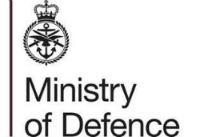
Today we have announced that a new helicopter-borne surveillance system has been chosen to protect the Royal Navy’s future Queen Elizabeth Class carriers. Here, Minister of State for Defence Procurement Philip Dunne talks about this important advancement in technology.
Today, I am delighted to announce that we have chosen Thales as the sub-contractor to provide the radar and mission system at the heart of the Crowsnest helicopter-borne surveillance capability being delivered by Lockheed Martin UK. The surveillance capability in its modern format was born out of a requirement to protect the Royal Navy’s task group from sea-skimming missile attack during the re-capture of the Falkland Islands in 1982. The new Crowsnest system will be integrated into the Merlin Mk2 helicopter and will replace the system developed after 1982, the Sea King Airborne Surveillance and Control which has served the nation well, both at sea and on land. Most recently, it provided essential intelligence to UK and coalition ground forces in Afghanistan.
Crowsnest will be the ‘eyes and ears’ of the fleet, designed to provide early detection of potential air and surface threats and provide military commanders time to take essential and often pivotal decisions. In addition, Crowsnest is good news for British industry; once manufacturing starts, it is expected around 300 jobs will be sustained in Crawley, Havant and Yeovil.
In the 2010 Strategic Defence and Security Review, we undertook to regain a Carrier Strike capability by 2020, by building and bringing into service HMS Queen Elizabeth, the first of the two Queen Elizabeth Class Aircraft carriers, and equipping it with Joint Strike Fighter (JSF) aircraft. More recently, at the NATO summit in Cardiff last September, the Prime Minister announced HMS Prince of Wales, the second ship of the class, would enter service ensuring, “we always have one available, 100% of the time.” At around 65,000 tons, these are the biggest ships we have ever built for the Royal Navy and, equipped with JSF, Crowsnest on the Merlin Mk2 and other helicopters, they will help keep the UK’s armed forces modern, agile and powerful. In all their missions, the aircraft carriers offer the UK the flexibility to establish a regional presence without reliance upon a host nation to support land based forces.
As part of my new role as Minister of State for Defence Procurement I shall be supporting the Secretary of State in leading the MOD’s work on the SDSR 2015 over coming months. Delivering our Carrier Strike capability will form an important element of this review.
With our aircraft carriers, we will have ships which can not only carry fighter aircraft but can also undertake a range of other essential tasks. Some of these will involve military deterrence or making use of the carriers’ broader war-fighting capability: for example we can use embarked helicopters to support amphibious landings or the vital work our Special Forces do to keep us safe.
But other tasks will be humanitarian. The UK has a long history of helping our allies and partner nations, and the carriers will play a vital role in maintaining the UK’s global reputation for providing assistance to our friends in times of need. We will all recall the harrowing scenes following the devastation left behind by Typhoon Haiyan in the Philippines in November 2012, and I was enormously proud of the vital and life-saving assistance HMS Illustrious was able to offer.
On other occasions, due to internal strife or other conflict abroad, the UK Government may advise British nationals that, for their own safety, they should evacuate from a particular area. Where that proves difficult, having an aircraft carrier available with its helicopters gives us the confidence to know that the Royal Navy could facilitate an evacuation quickly and safely.
Whether protecting the nation, providing humanitarian aid or helping to prevent conflict, one thing is clear: the combination of the carrier, its aircraft and personnel will equip the UK with some of the best capability that this country has ever seen.
![2013 QEC Image 04[4]](https://modmedia.blog.gov.uk/wp-content/uploads/sites/142/2015/05/2013-QEC-Image-044-620x349.png)
